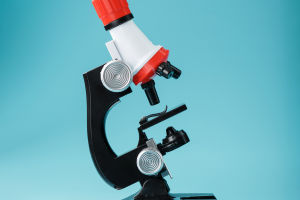Due to uneven heating of the Earth's surface caused by solar radiation, the pressure distribution in the atmosphere becomes imbalanced.
Air moves horizontally under pressure gradients to form wind. With the right technical conditions, wind energy can be harnessed as a vital energy source.
Wind turbines generally consist of components such as the rotor, generator (including apparatus), yaw mechanism (tail), tower, overspeed safety device, and energy storage device.
The working principle of wind turbines is relatively simple: the rotor rotates under the force of the wind, converting wind energy into mechanical energy of the rotor shaft. The generator rotates and generates electricity driven by the rotor shaft. Broadly speaking, wind energy is also solar energy, so wind turbines can be considered a type of thermal energy utilization generator that uses the sun as the heat source and the atmosphere as the working medium.
Component suppliers for wind turbine systems must make regular testing a routine to ensure the reliability of components. Additionally, prototype assembly testing of wind turbine systems is essential. Reliability testing aims to identify potential issues early and ultimately ensure the system's reliability. Reliability testing should be conducted at multiple levels, especially for complex systems, including components, assemblies, subsystems, and systems.
Components should be tested first, followed by overall testing, to reduce project risks. After testing at each level of system reliability testing, reliable failure reports should be generated, analyzed, and corrected to improve the level of reliability testing. Although such testing requires a significant amount of time and expense, it is worthwhile compared to the losses caused by long-term downtime due to failures during actual operation and product instability.
For centuries, wind turbines, like hydraulic machinery, have played an important role in replacing human and animal power sources, contributing to productivity development. The widespread application of electromechanical power in modern times and the discovery of oil fields in the Middle East in the 1950s slowed the development of wind turbines.
In the early 1970s, due to the "oil crisis," energy shortages became a problem. People realized the instability and limitations of conventional mineral energy supplies and thus sought clean renewable energy sources, making the pursuit of clean renewable energy an important issue in the modern world. Wind energy, as a renewable, pollution-free natural energy source, regained attention.
As wind power is a new energy source, there is still a considerable gap in cost and technology compared to traditional thermal and hydroelectric power. Therefore, the rapid development of wind power requires strong support from national policies. Looking at countries with rapid wind power development such as Germany, Spain, and India, without exception, they have provided significant policy incentives to the wind power industry.
National policy support will be the fundamental guarantee for the rapid development of the wind power equipment manufacturing industry, presenting a rare historical development opportunity for the wind power equipment manufacturing industry.
The rapid development of wind power technology not only provides an important avenue for the sustainable utilization of clean energy but also offers feasible solutions to challenges in energy supply and environmental protection.
With continuous technological advancements and gradual cost reductions, wind power is believed to become an important component of the energy sector in the future, making greater contributions to building a clean, green, and sustainable energy system.


